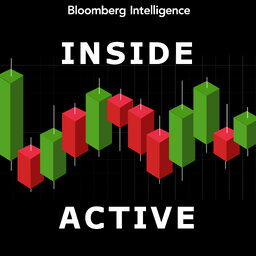Man Group’s Chu On Dispersion in Commodities
Out of the 31 global stocks found in four or more BI themes, the ones exposed to physical environment issues have outperformed tech stocks dramatically so far this year. In this episode of Inside Active, host David Cohne, mutual fund and active management analyst with Bloomberg Intelligence, along with co-host Breanne Dougherty, head of thematic strategy at BI, spoke with Albert Chu, a portfolio manager with the Man Group and manager for the American Beacon GLG Natural Resources ETF (MGNR). They discussed dispersion in commodities and why falling interest rates have historically been positive for commodity prices. They also spoke about the likelihood of a global restocking cycle amid rate cuts and a stimulus environment in China, and which subsectors Chu is bullish on.
 Inside Active by Bloomberg Intelligence
Inside Active by Bloomberg Intelligence


